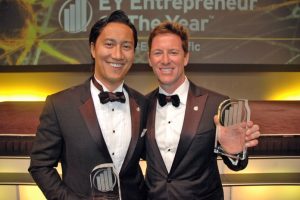Conflict. The very word sends ripples of anxiety through most people. And, yet, our world is fraught with conflict – politically, personally and in our professional lives. For my last blog post in COMM 292, I’ve focused on conflict as it is the biggest challenge for most teams. While each team member shares a common goal of striving for success, differences along the way can often make it almost impossible to succeed creating frustration and anger in its wake. As Kathleen Robertson explains in her blog post, Appreciating the value of teamwork, “Now more than ever, it seems that team-based projects and work are the way to get things done, not necessarily in the most efficient way, but in the most well-rounded and thorough way.” Recognizing that collaboration is key to success, it’s important to acknowledge that no two people think alike, and that therefore conflict is inevitable. Without conflict many important conversations and debates would not take place. Amazing ideas stem from these  discussions, which can be invaluable as it ensures the final solution is far better thought out, than if all team members were to immediately agree on everything. It is highly unlikely, as Dr. Rawcliffe has pointed out, for everyone working on a team to see eye to eye on every matter of business. As individuals we all have different ways of approaching projects and finding solutions to problems. The only way to succeed in life is to respect the differing opinions and perspectives of others. In Mike Myatts Forbes article titled 5 keys of dealing with workplace conflict, he highlights that leadership and conflict go hand-in-hand and that there are many successful approaches to resolving conflict. These include:
discussions, which can be invaluable as it ensures the final solution is far better thought out, than if all team members were to immediately agree on everything. It is highly unlikely, as Dr. Rawcliffe has pointed out, for everyone working on a team to see eye to eye on every matter of business. As individuals we all have different ways of approaching projects and finding solutions to problems. The only way to succeed in life is to respect the differing opinions and perspectives of others. In Mike Myatts Forbes article titled 5 keys of dealing with workplace conflict, he highlights that leadership and conflict go hand-in-hand and that there are many successful approaches to resolving conflict. These include:
- Defining acceptable behaviour, we did something similar to this with our group contracts, promising to act in a professional and supportive manner.
- Hit conflict head on, meaning be proactive, have the difficult conversations ahead of time.
- What’s in it for me factor; to be a successful leader one must be able to help others pursue their objectives.
- The importance factor: don’t let things slide that are of real importance to you; if it will constantly impact your effort and performance in the future, have an open conversation with your team members.
- View conflict as an opportunity. Why is this? Because as you have all heard a million times conflict provides a fantastic learning opportunity. “Smart leaders look for the upside in all differing opinions.”
We need to take these lessons to heart. Embrace conflict as an opportunity to learn and grow; to make our ideas better and and our solutions stronger.
Word count : 435
References :
Image links : http://www.actioncoach.com/wp-content/uploads/2015/06/meeting_high_five-iStock_000005449269Large.jpg, http://www.skipprichard.com/wp-content/uploads/2015/05/bigstock-Team-of-five-colleagues-meetin-85492604.jpg


 e where there are no senior management levels; everyone is treated equally. What makes Squarespace so successful is not only it’s flat structure, but recognizing the importance of employee well-being by providing spaces to rejuvenate and relax, flexible vacations, catered meals, monthly celebrations and guest lecturers for ongoing learning and growth. Additionally, the workspace is beautiful, and the atmosphere is described as being stimulating, engaging and fast-paced. With fewer or no management levels, employees typically feel more empowered and their creativity is not only encouraged, it’s celebrated. This approach is common among startups, but is tricky to maintain as the company expands, which generally leads to groups forming within the organization.
e where there are no senior management levels; everyone is treated equally. What makes Squarespace so successful is not only it’s flat structure, but recognizing the importance of employee well-being by providing spaces to rejuvenate and relax, flexible vacations, catered meals, monthly celebrations and guest lecturers for ongoing learning and growth. Additionally, the workspace is beautiful, and the atmosphere is described as being stimulating, engaging and fast-paced. With fewer or no management levels, employees typically feel more empowered and their creativity is not only encouraged, it’s celebrated. This approach is common among startups, but is tricky to maintain as the company expands, which generally leads to groups forming within the organization.
 Word Count : 490
Word Count : 490 Pontefract explains that for Telus to stay on top, they must constantly be improving and looking for better, more efficient ways of doing things. A clearly defined framework creates a sense of stability, makes the hiring process easier, helps establish how employees develop, and determines what their performance is measured against. In essence, the article expresses the steps and components of the philosophy including cost savings, coaching opportunities, emotional and social intelligence expansion, employee engagement, and increased collaboration, among other opportunities.
Pontefract explains that for Telus to stay on top, they must constantly be improving and looking for better, more efficient ways of doing things. A clearly defined framework creates a sense of stability, makes the hiring process easier, helps establish how employees develop, and determines what their performance is measured against. In essence, the article expresses the steps and components of the philosophy including cost savings, coaching opportunities, emotional and social intelligence expansion, employee engagement, and increased collaboration, among other opportunities.



 lue proposition is essential to a company’s success as it is the way for companies to connect with their target market to intuitively understand why this product/brand resonates with them.
lue proposition is essential to a company’s success as it is the way for companies to connect with their target market to intuitively understand why this product/brand resonates with them. 